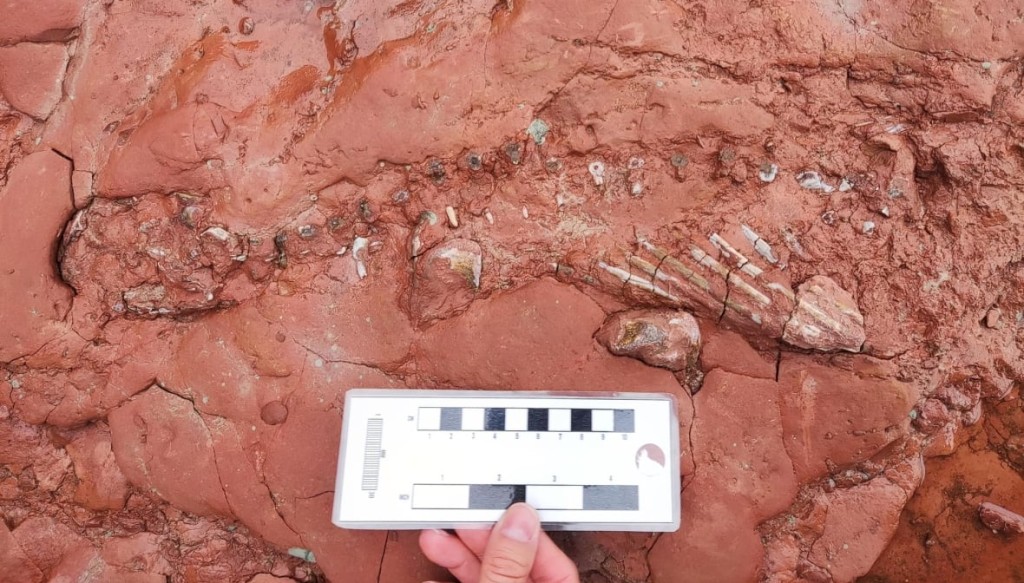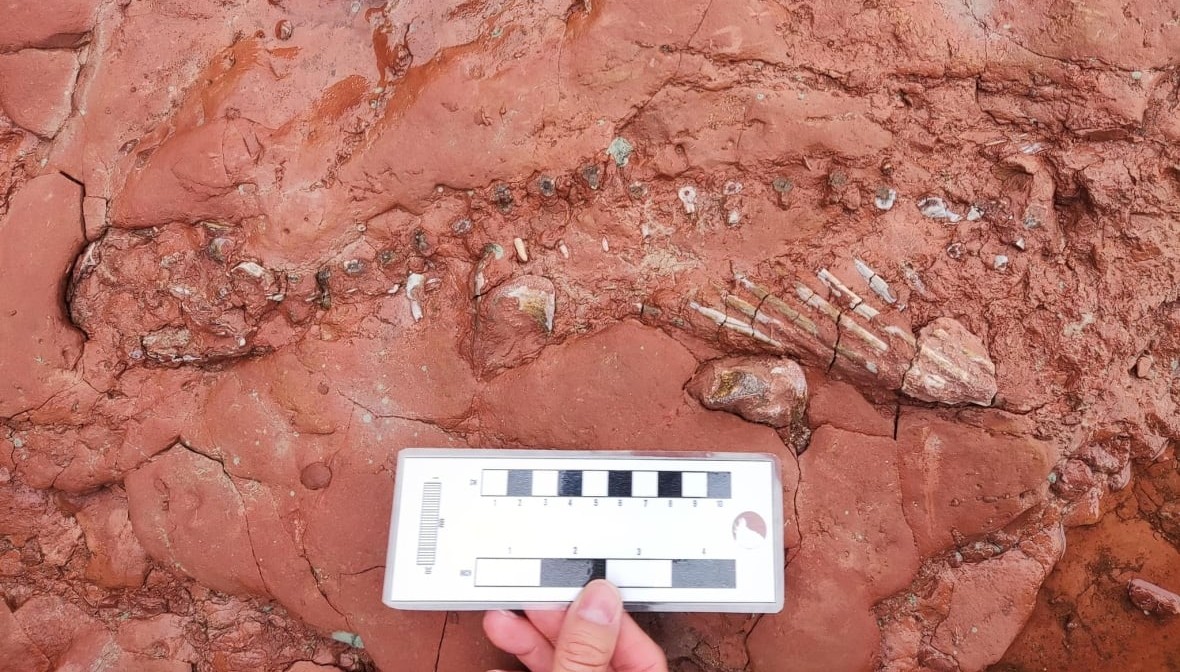
A discovery which paleontologists are calling the find of a lifetime was recently turned up by a school teacher in Canada.
It could be 300 million years old, and is probably at least a prehistoric species new to science, and at most a “once-in-100-years” find that could go so far as to rewrite the fossil record.
Lisa Cormier was taking a walk down on Cape Egmont in southwest Prince Edward Island (PEI) when she found what looked like a skeleton.
There were the head, ribs, and spine; all pressed into the stone like a fossil. Taking pictures and sending them to her mother sent off a chain reaction that had geologists and paleontologists racing to the cape.
It was a fossil, and John Calder who is an expert in prehistoric PEI, told CBC news it was “extremely rare.”
“A fossil like this comes up every 50 years or 100 years,” he said. “I mean there’s no real frequency, but it’s rare. And this could be a one-of-a-kind fossil in the tree of life … of evolution of amphibians, to reptiles, to mammals to us.”
Calder believes it’s an early reptile from after their class broke off from amphibians during the Carboniferous period, around 300 million years ago. Few specimens exist from this era, and so getting a bead on where it’s located in the evolution of reptiles, or even its place in absolute time, could be very tricky.
The scientist also advised beachcombers to be on the lookout, as not only are prehistoric finds becoming more common, but there are a lot more beachcombers that there are paleontologists.
“To think that I found something that might be 300 million years old, it’s incredible,” Cormier said. “I think it’s gonna be a one time [thing], but I’ll continue my walks and I’m going to continue to look for sea glass and maybe I’ll find something else.”
REWRITE The Bad News With This Good Discovery From Canada…




















